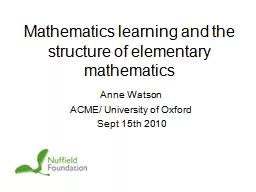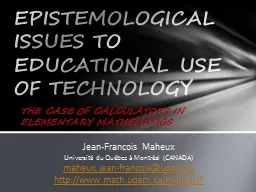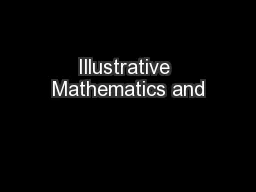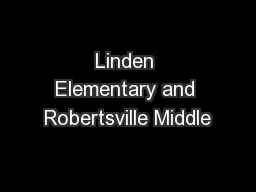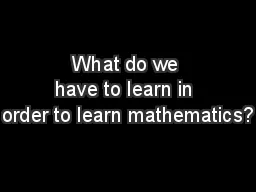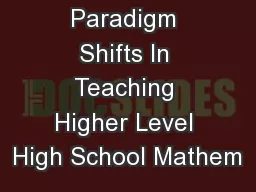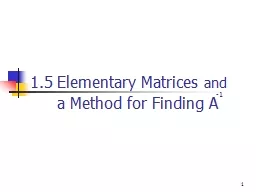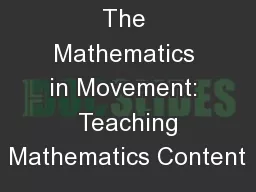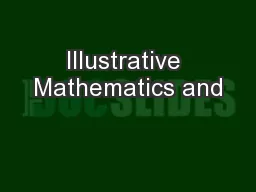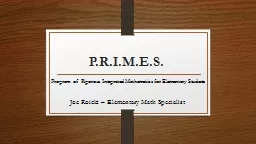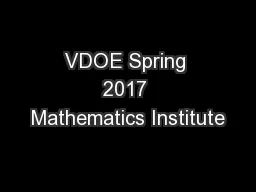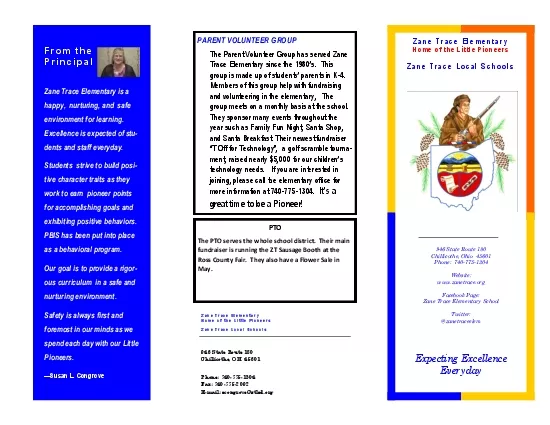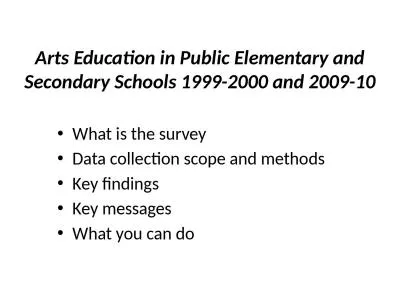PPT-Mathematics learning and the structure of elementary mathem
Author : olivia-moreira | Published Date : 2016-09-13
Anne Watson ACME University of Oxford Sept 15th 2010 Evidence Synthesis of research about what children can do in and out of educational contexts What it means to
Presentation Embed Code
Download Presentation
Download Presentation The PPT/PDF document "Mathematics learning and the structure o..." is the property of its rightful owner. Permission is granted to download and print the materials on this website for personal, non-commercial use only, and to display it on your personal computer provided you do not modify the materials and that you retain all copyright notices contained in the materials. By downloading content from our website, you accept the terms of this agreement.
Mathematics learning and the structure of elementary mathem: Transcript
Download Rules Of Document
"Mathematics learning and the structure of elementary mathem"The content belongs to its owner. You may download and print it for personal use, without modification, and keep all copyright notices. By downloading, you agree to these terms.
Related Documents

